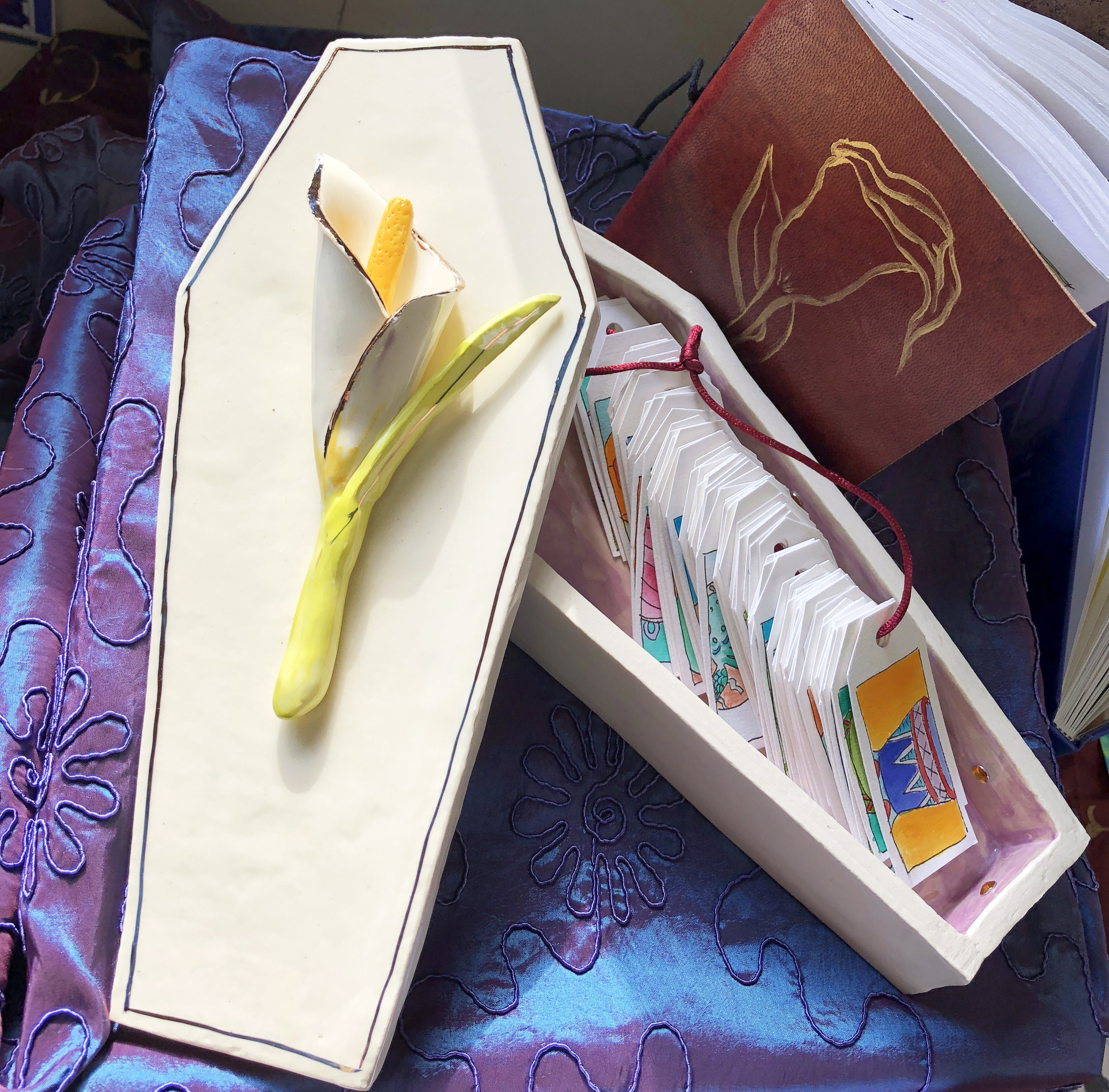Mixed media
Work that doesn’t fit anywhere else!
A HISTORY OF FLIGHT
Inspired by Sarah Sentilles’ book Draw Your Weapons, I have been looking at the relationship between art and violence. Art depicting violence can be ugly... bloody, visceral, a visual representation using the violence itself as the subject. Thinking about ways to reference violence through beauty, the word poignant came to mind. Often in news photos documenting violence, it is the out of place everyday object that has the most impact. You look past the obvious signs of a violent aftermath to the child’s shoe discarded among the wreckage; this simple inanimate object is the visual shorthand that moves you; it makes the violence seem more relatable and therefore more real.
Unthinkable numbers of people have fled their homes to escape wars being fought around them. For each war I decided to imagine an everyday or precious object that might have been grabbed up in flight, either for practical purposes, or because it holds sentimental or economic value. I began to catalogue a history of human flight – only 8% of documented human history has been free of war (and I don’t think this definition of war includes ‘leaders’ attacking their own citizens). Each war is labeled with an item that might be found lying on the road to safety; the resilience of human hope among the aftermath of violence.
A coffin, the universal ‘icon’ for death, contains this catalogue of wars. It is an instantly sobering object, the coffin. Often beautifully crafted, but always chilling. You approach it knowing you are going to find death within. The circle of life is also the circle of death, in an infinite loop.
During this cataloguing, on May 26, 2018, yet another asylum seeker under Australia’s ‘protection’ committed suicide after years in one of our ‘offshore facilities’. As a Rohingyan man fleeing what the UN has called one of the most violent regimes in the world, Salim Kyawning was found by Australia to be a refugee, but spent 5 years detained on Manus enduring a steady decline in physical and mental health. Labelled by his friends as the ‘Man of Flowers’, Salim has become the human representation of my history of flight. A photo of him holding flowers for the guards who were coming to forcibly remove him and his fellow detainees from the Manus campsite flooded my social media, and I have used that image to make a memorial tile, hung with all the labels our country has given him in the years his welfare has been our responsibility. So many tags, none of them describing who Salim actually was, yet they are all we are left with. He has also become detritus on the road away from violence, failing to find the peaceful life he ran towards for so long.
Vale.
Postscript: On 14 June 2018 a 26 year old Iranian man also took his own life on Nauru... when will our complicity in this tale of horrors end?
I also include a later project from 2018, Boundless Plains to Share… this is a memorial to 12 of the asylum seekers who have died on Manus and Nauru… hopefully one day there will be an apology to them and their families for the appalling way we have treated them and the terrible ways we have let them down.


Memorial tile
the copper tags are all the labels ascribed to Salim as an asylum seeker in the Australian system

Artists' book
unipin and watercolour drawings

A history of flight artists' book

Coffin
paper clay and glaze (and stick on gems!)


A history of flight
artists’ book, coffin and unipin and watercolour tags




Boundless Plains to Share
unipin and watercolour on fabbriano 300gsm postcards, mounted on foamcore board painted with acrylic
This piece is a memorial for 12 of the asylum seekers who have died on Manus and Nauru since 2014. Their blood is on our hands.


